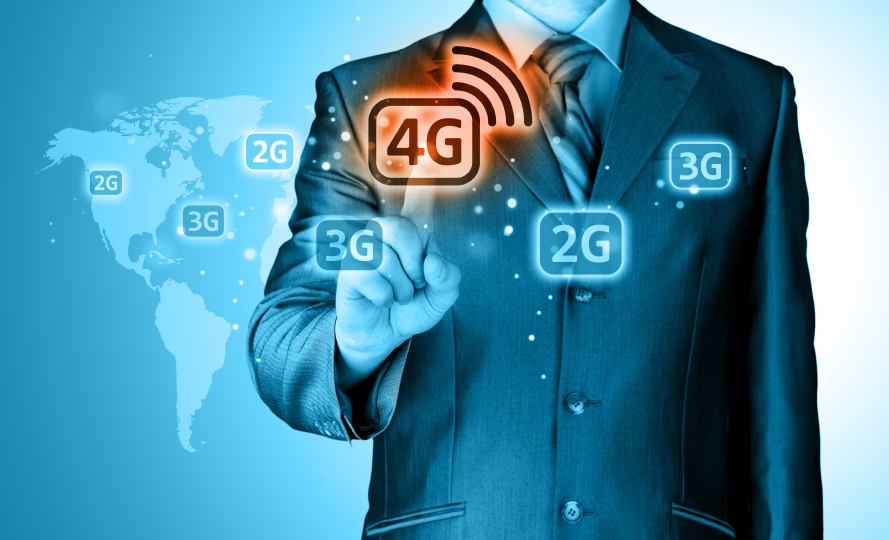The Tools to Track a Predictable and Secure 5G Network
By: Rajive Bagrodia

If we could create a future designed specifically to enable our progression to an ever more digital world, certain tools would be essential to businesses in navigating the way forward. These include better simulation and modelling programs. But first, let’s rewind the clock to consider how we got here.
In 1979 the first 1G network was launched in Tokyo, and by the mid-1980s it spread to the United States with the first US-based commercially automated cellular network located in Chicago. Later, signals were digitized with the 2G networks of the early 1990s. Modern networks in use today are on the fourth major iteration of mobile network standards, known as 4G.
These 4G networks combine several different components to cultivate high-quality voice and advanced data services to all kinds of subscribers all over the globe. 4G networks birthed the smartphone revolution and empowered a new kind of high-speed networking that transformed how people, enterprises, and governments think about communication on the move.
Looking back, it’s hard to conceive how groundbreaking the technological developments of 1G seemed at the time. Here in 2020, commercial mobile networks have become so exceedingly complex that the achievements of 1G seem like a tin-can telephone and string by comparison. On the verge of the 5G revolution, it is important to consider how businesses and governments can best equip themselves for the breathtaking advancements just over the horizon.
The 5G jump
The humble 1G network was designed and deployed for a single telephone system in a single city. The move to 5G network frequencies involves intricate architecture across continents and is intended to enable and proliferate an entire new sphere of Internet-connected devices that will transform our day-to-day life. These include smart buildings and sensor networks to telematics and mobile-to-mobile convergence.
Furthermore, communication systems have moved from networks to ecosystems. 4G, for instance, is currently deployed on over 600 individual commercial networks that may span across multiple countries. And 5G will prove to be even more expansive.
All commercial networks operating today—even the single 1G network still in existence—must adhere to a defined set of interfaces and protocols to meet the standards set by the Third Generation Partnership Project. The 3GPP is a standardization group that provides the basis for interoperability between hardware and software vendors. Transitioning from 4G to 5G, however, requires particularly robust work to ensure interoperability and seamless communications between connected systems across the world.
As the necessity for standardization increases, the difficulty of such standardization increases at an even greater rate. As 3GPP determined the specifications for the transition to 5G, the assumption was that the transition would be similar to the move from 3G to 4G. However, there are technical barriers that stand in the way of a traditional network implementation, not to mention the implications of the existing infrastructure. The progression from 2G to 3G to 4G represents technological shifts aimed at improving speed. As in the past, the move to 5G is spurred by an increased demand for bandwidth and low latency. However, the move to 5G differs in that it involves improvements in regard to channel optimization and high frequency usage that indirectly increases network output.
Overall, 5G networks aim for ubiquitous connectivity; this is the first network designed to support the massive Internet of Things and advanced analytics, enabling communicating on a
machine-to-machine basis. Unlike the move to 4G, the move to multi-function 5G networks isn’t just about connecting humans to data—and is significantly more complex. The introduction of
millimeter wave high-frequency bands supported by massive multiple-input multiple-output methods means that 5G base stations might support 100 antennas where 4G base stations have 12. On top of
that, there will need to be far more base stations, all of them employing beamforming all the time.
Bumps on the road to advanced analytics
These new 5G system environments create challenges for wired and wireless network planning, network analysis, and cyber threat analysis. Take, for example, optimizing cell tower placement for cost and operational effectiveness, as analyzing networks and creating layouts becomes increasingly knotty. Or consider the more elaborate scenario of military operations. In past 4G environments, military personnel looking to disrupt communications in a contested region could simply target cell towers in the area to cut off service. Base stations in 4G environments are powerful cells that cover a large



















